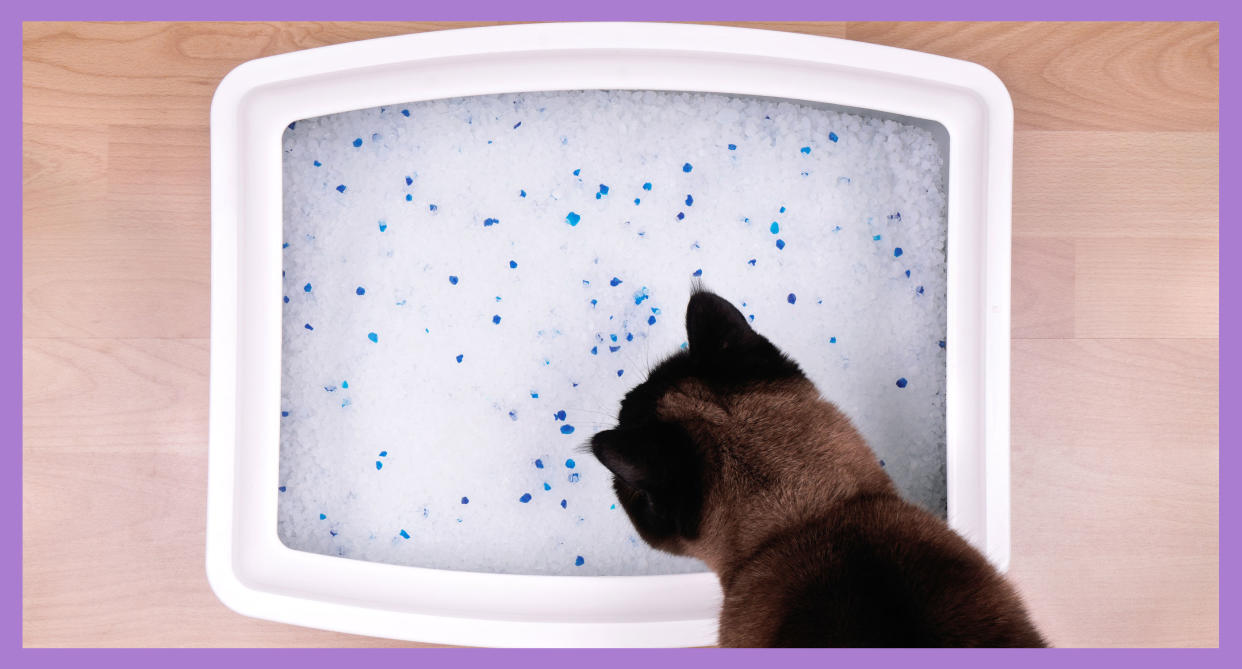What is kitty litter made of and is it safe for your cat?

Perhaps it’s not the most sophisticated topic of conversation, but have you ever wondered why household cats go to the bathroom using kitty litter? Turns out they’re just following the lead of their ancestors.
“They originally came from a sort of dry desert environment,” Jessica Romine, DVM, DACVIM, small animal internal medicine specialist at BluePearl Veterinary Partners in Southfield, Mich. tells Yahoo Lifestyle. “When [cats] would defecate in the wild, they would go into loose, dry soil with a sand-like component — something they could scrape, hide and cover up, because they’re very hygienic animals.”
Today, because not many pet owners are interested in filling their homes with desert sand, cats relieve themselves in store-bought kitty litter, which is meant to mimic the easily-digable material cats used in the wild, according to Romine.
And while there are plenty of types of cat litter available on the market, the most common types are either “clumping” or “non-clumping” litter, says Jennifer Freeman, DVM, PetSmart resident veterinarian and pet care expert. “Traditional non-clumping litter can be made of any clay material that can absorb liquids,” she explains. Clumping litter — which makes waste removal a little easier on cat owners — is made of “granulated bentonite clay that clumps together when wet,” adds Freeman.
Is kitty litter toxic?
You may have heard fellow cat owners talk about the toxicity of traditional kitty litter and debate whether the materials should be swapped for something more natural. According to Romine, most litters are completely safe for your beloved kitty. For litter made from bentonite, “the only toxicity that can occur is if there is a cat that starts eating the litter,” she says, noting that eating the litter can cause obstruction or constipation. (Normal grooming, which might include licking little sediments off their paws, however, is fine.) Romine explains that if your cat suddenly begins eating the litter out of the blue, you should consult your vet, as it might be a sign that the cat is anemic and in search of iron.
Cats could also experience a negative reaction with this type of litter if they have a breathing problem like asthma or are sensitive to dust. In these cases, Romine recommends a low dust litter and litter box without a cover, since the cover traps the dust.
Alternatives to conventional cat litter
If you still have concerns about the safety of conventional cat litter, or if your cat does not seem to like using it, you’re in luck: “There are so many eco-friendly options [on] the market that can help alleviate pet parents’s concerns about their cat’s health and are great for the environment,” says Freeman. Litter can be made out of corn cobs, recycled paper, sand and even reused rubber tires, Romine explains. “What matters most is that it’s something the cat uses,” she adds. “Cats can be picky.”
If you are switching the material of your cat’s litter, Romine advises her clients to start by mixing the materials so the cat can adjust. If the cat refuses to use the new material, you’ll likely have to switch back to what works since, as the vet puts it, “cats usually get what they want.”
If eco-friendliness is a priority of yours, you might stay away from clay- and silica-based litters, since they aren’t biodegradable and won’t break down once discarded, says Freeman. If you’re the composting-type, you can use corn-, wood-, paper- or wheat-based litter as a fertilizer for your garden, since the materials are biodegradable. Just be sure you are using it on plants that you’re not planning to consume, like flowers.
Ultimately, what’s most important is that your cat is comfortable using their litter box. Keeping the box clean is crucial. Romine recommends removing anything the cat has passed during the day every 24 hours, and giving the whole thing a clean weekly.

